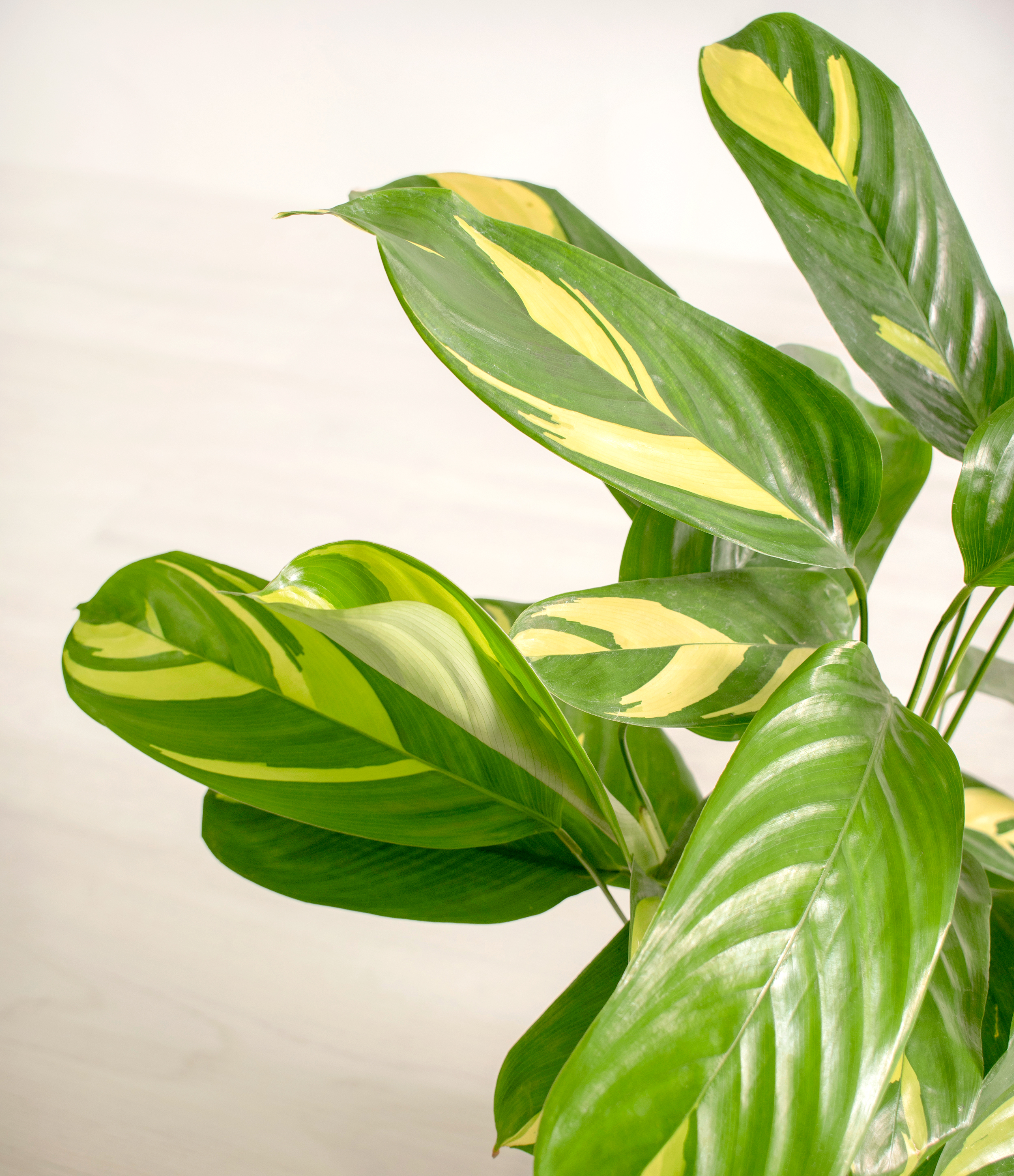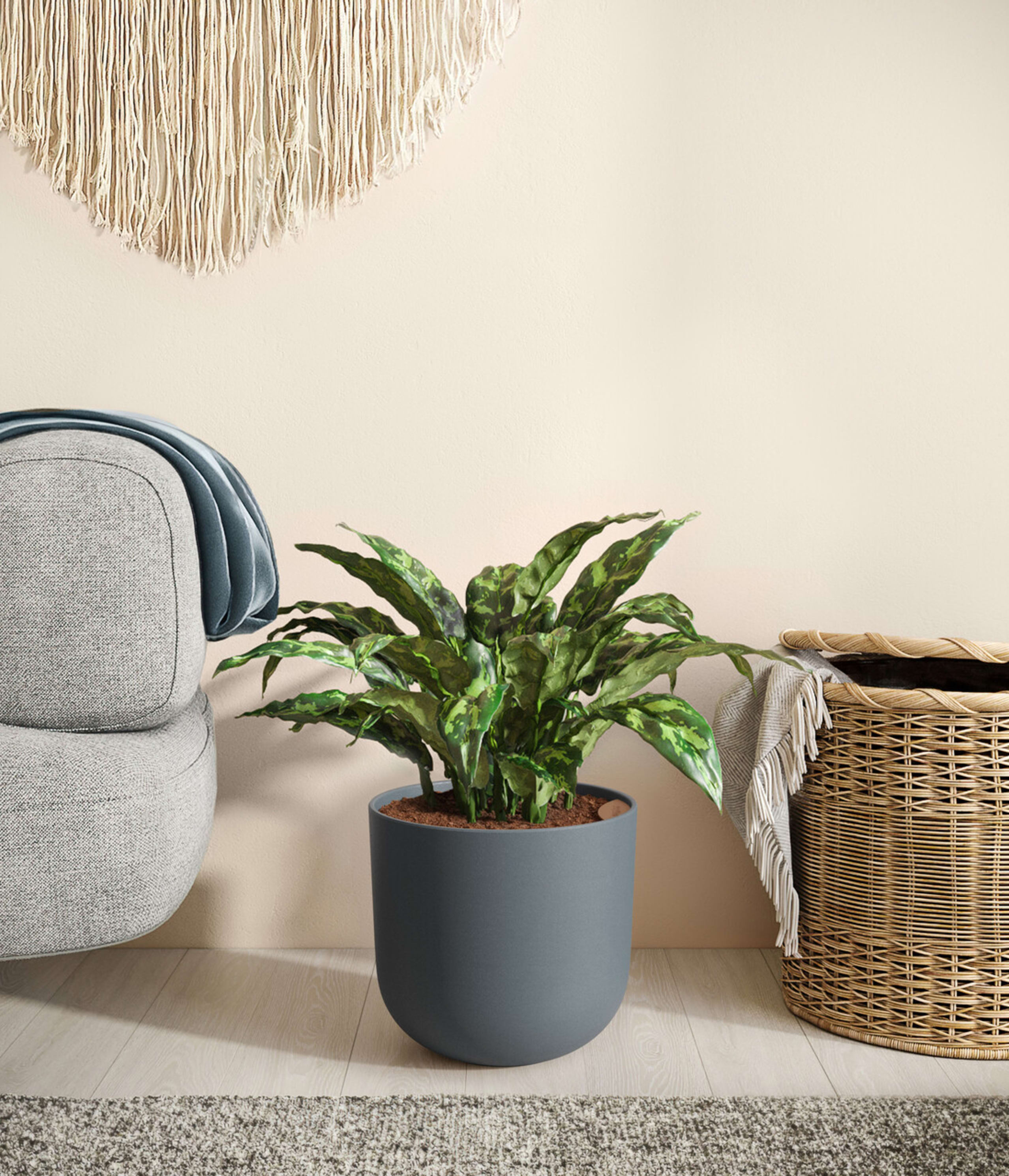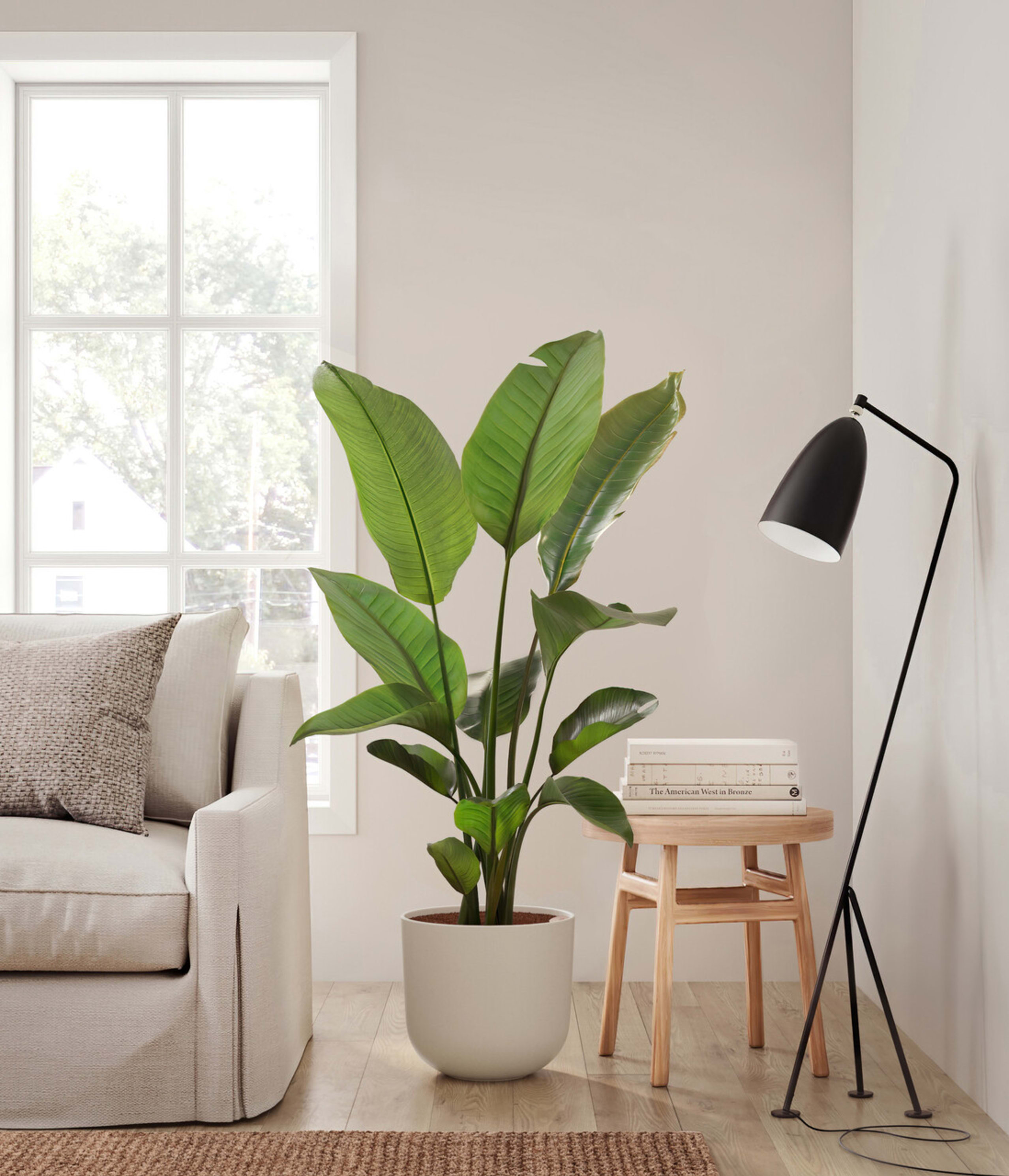About the Golden Mosaic
Hailing from Brazil, the evergreen perennial Golden Mosaic is revered for the strikingly beautiful gold and cream variegations on its large, oval leaves. It belongs to the Marantaceae family, known as 'Prayer Plants,' which, much like humans and unlike most plants, have a wake-and-sleep cycle according to a circadian rhythm. This means the leaves move upwards during the night and downwards throughout the day in search of the sun.
Other common names
- Bamburanta
- Never-Never Plant
- Ctenanthe
- Ctenanthe Lubbersiana (Previously Stromanthe Lubbersiana)
How Often Should I Water My Golden Mosaic?
The Golden Mosaic enjoys growing in evenly moist soil with high humidity during the growing season. It will require less watering in the winter months. With easyplant, watering your Golden Mosaic is simple. Make sure to check the easyplant reservoir once a month and fill it when empty, and you're all set!
If you don't have an easyplant pot to make watering hassle-free, mainly water your Golden Mosaic when the top 2-3 inches of soil is dry. During the growing season, spring and summer, you may need to water more often to keep the soil consistently moist. You will want to reduce watering in the winter and allow the soil to dry a bit between watering. This plant thrives with soft water or rainwater. If you use tap water, leave it sitting for a day to reduce the amount of chlorine in the water and protect your plant from damage.
Golden Mosaic Light Needs
Golden Mosaic grows best in a space with bright indirect light, where the sun rays are diffused, and can also adapt to spaces with bright direct light, where the sunlight streams inside directly. Avoid placing it in spaces with low light or spaces without natural sunlight.
The best places in your home to place the Golden Mosaic are near south or west-facing windows. If the temperatures get too high, move the plant a couple of feet away from the window, still in the stream of light. You can also add a sheer curtain to diffuse the light. If this plant isn't getting enough light, the leaves lose color and become pale.
Golden Mosaic Plant Care
During your Golden Mosaic's first few days at home, one or two leaves might fall or turn brown at the tips. This is a normal part of adjustment and is no cause for concern. To help it grow optimally and evenly, occasionally dust the leaves and rotate the pot by a ¼ turn once a month.
How Big Do Golden Mosaic Plants Grow?
Golden Mosaic is a rapid grower characterized by its gorgeous, lush green and cream-colored leaves. This plant grows upwards with outward-facing variegated leaves. The plant adds five to six new leaves a year. Those large oblong leaves grow to a length of roughly 6 inches, with a width between 3-6 inches.
Golden Mosaic plants can reach 2-3 feet tall and 3-4 feet wide. This plant should be repotted every year to accommodate its growth. When it reaches maturity, it will require a pot size of 12 inches.
The Golden Mosaic does have the ability to flower, but it is rare when kept indoors. To consider this plant an adult would mean it can create a sprout.
Many factors go into this plant's growth, including proper lighting, regular watering, adequate temperature and humidity, and more.
Temperature & Humidity
The ideal temperature of the Golden Mosaic is between 60-80˚F (16-27˚C). This plant can't tolerate temperatures that fall below 60˚F (16˚C), especially below 55˚F (13˚C). Be sure to keep the plant away from AC/heating vents, drafts, fans, and heaters. Though the Golden Mosaic likes high temperatures, heating vents and heaters can dry out the plant's leaves and soil.
The ideal humidity level for this plant is between 40-70% humidity.
To create a humid environment for your golden mosaic, try placing a tray of water near the plant or using a humidifier. You can also group it with other plants or place it in a bathroom or kitchen where there is naturally higher humidity.
Are Golden Mosaic Toxic for Pets & Kids?
Some plants add a pleasing aesthetic to the home and can adapt well to the indoor environment but are unsafe to keep in the house. When considering a houseplant, it's important to know if there is anything toxic about the plant that could harm children or animals if touched or ingested.
Golden Mosaic is non-toxic and safe for humans and animals if consumed. However, this plant can trigger skin allergies in those with skin issues. The allergy triggers are rare and have been reported as mild.
This plant is safe for both children and pets, and it is safe for both cats and dogs. Though Golden Mosaic is non-toxic, ingesting the plant leaves or stems is still not recommended. If a pet ingests too many leaves, it could cause minor GI tract irritation, so keep an eye on pets with sensitive stomachs.
Troubleshooting Common Problems with Golden Mosaic
Part of plant care is observing how your plant is fairing in its environment, so you can make adjustments if needed. Every houseplant will have different signs or tells when they aren't doing well. Here are a few things to look out for with the Golden Mosaic and what to do to fix the issue. If leaves are curling or becoming brown, relocate the pot to a less brightly lit location. If leaves are drooping or yellowing, relocate the pot to a more brightly lit location. Yellowing can also be a sign of overwatering. Be sure the plant's pot has proper drainage and isn't sitting in excess water. Check the soil before watering. This plant likes to be evenly moist but not soaking wet. Back off a bit from the watering frequency by a day or two in between watering. Another cause of yellowing leaves is pests. Examine your plant for spider mites that like living on the underside of the leaves. If your plant has pests, wipe the leaves with a damp cloth to remove them and treat them with insecticidal soap or neem oil. The most common diseases with the Ctenanthe Lubbersiana are leaf spot disease, southern blight, and root rot. All these diseases are associated with overwatering or the plant sitting in standing water, so follow proper watering instructions to avoid these issues.
Frequently Asked Questions about Golden Mosaic Plant
Is Ctenanthe Lubbersiana a Calathea?

No, the Ctenanthe Lubbersiana is not a Calathea. These plants have a similar look and come from the Marantaceae family, but they are different species. The way to differentiate between the two is Ctenanthes' stalks develop above ground while Calathea leaves emerge from their root mass.
Should I Mist My Ctenanthe?

No, misting is not necessary for Ctenanthe, although it does thrive in high humidity. To increase humidity levels, consider using alternative methods such as grouping it with other plants or employing a pebble tray. These techniques can effectively raise the humidity around the plant without the risk of leaf spot fungus, which can occur with excessive water on the leaves.
Is Ctenanthe Lubbersiana Easy to Care For?

Yes, the Ctenanthe Lubbersiana is relatively easy to care for, provided all care instructions are followed to allow the plant to thrive. The Golden Mosaic will alert you to any issues with its appearance, i.e., yellowing or dropping leaves, pale leaves, browning, etc.

 Small Plants
Small Plants Medium Plants
Medium Plants Plants Collections
Plants Collections Large Plants
Large Plants Huge Plants
Huge Plants